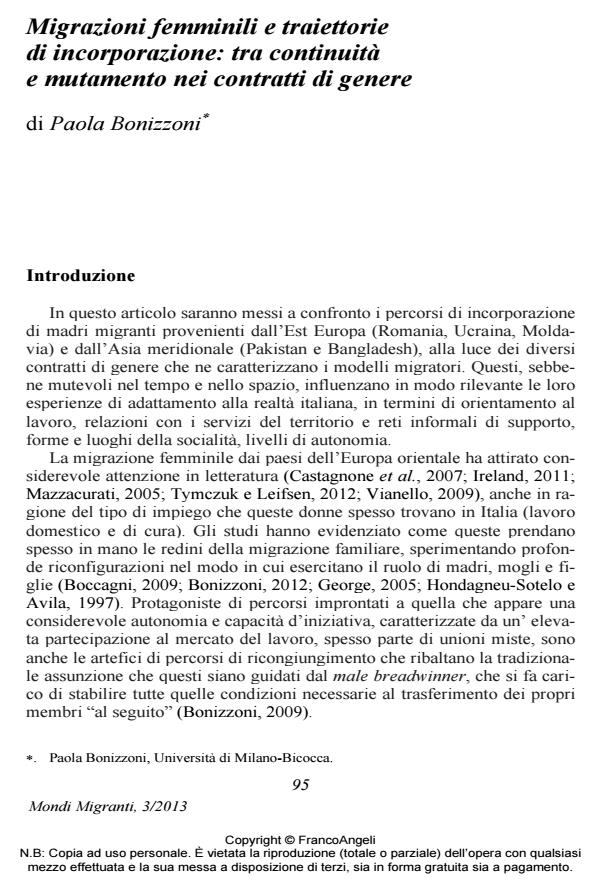Migrazioni femminili e traiettorie di incorporazione: tra continuità e mutamento nei contratti di genere
Titolo Rivista MONDI MIGRANTI
Autori/Curatori Paola Bonizzoni
Anno di pubblicazione 2014 Fascicolo 2013/3
Lingua Italiano Numero pagine 26 P. 95-120 Dimensione file 684 KB
DOI 10.3280/MM2013-003005
Il DOI è il codice a barre della proprietà intellettuale: per saperne di più
clicca qui
Qui sotto puoi vedere in anteprima la prima pagina di questo articolo.
Se questo articolo ti interessa, lo puoi acquistare (e scaricare in formato pdf) seguendo le facili indicazioni per acquistare il download credit. Acquista Download Credits per scaricare questo Articolo in formato PDF

FrancoAngeli è membro della Publishers International Linking Association, Inc (PILA)associazione indipendente e non profit per facilitare (attraverso i servizi tecnologici implementati da CrossRef.org) l’accesso degli studiosi ai contenuti digitali nelle pubblicazioni professionali e scientifiche
- La crescita delle unioni miste in Italia: un indicatore di accresciuta integrazione degli immigrati e maggiore apertura della società? Davide Azzolini, Raffaele Guetto, in MONDI MIGRANTI 2/2017 pp.33
DOI: 10.3280/MM2017-002003
Paola Bonizzoni, Migrazioni femminili e traiettorie di incorporazione: tra continuità e mutamento nei contratti di genere in "MONDI MIGRANTI" 3/2013, pp 95-120, DOI: 10.3280/MM2013-003005